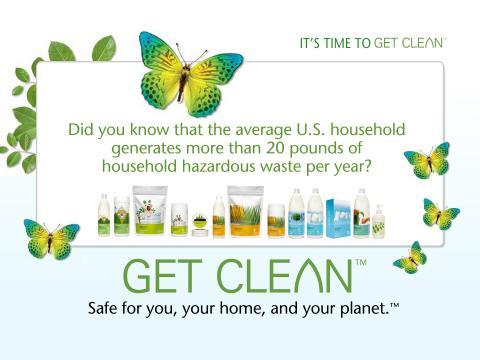
If it smells clean, it probably isn't. You cannot smell clean!
Right now, across America, inside cupboards or sitting out on a shelf, are products that contain ingredients like chlorine, phenol, ammonia, and formaldehyde. These ingredients – and more – may be toxic. Toxic means dangerous, hurtful, and not very clean at all. A home is no place for dangerous and hurtful. Common household cleaners and appliances give off fumes that have been linked to increasing the risk of children developing asthma, the most common serious chronic childhood disease. Asthma rates in children under the age of five have increased more than 160%. An average of one out of every 13 school-aged children has asthma. These are alarming statistics. Children are highly vulnerable to chemical toxicants. They drink more water, eat more food, and breathe more air, pound for pound, than adults. The concern here is that children will have a much heavier exposure than adults to any toxins that are present in our water, our food or our air. There are other disturbing statistics as well. Over 90% of poison exposures happen at home. Common bleach is the #1 household chemical involved in poisoning. Organic pollutants, found in many common cleaners and even air fresheners, are 2 to 5 times higher inside the home than out. A person who spends 15 minutes cleaning scale off shower walls could inhale three times the “acute one-hour exposure limit” for glycol ether-containing products set by the California Office of Environmental Health Hazard Assessment. People should be aware that if their home is like the average home in this country, it generates more than 20 pounds of household hazardous waste each year. Examples of hazardous waste that are designated by the EPA (Environmental Protection Agency) are: toilet cleaners, tub and tile cleaners, oven cleaners, and bleach. There is a place one can go to find out the toxins contained in products, brand by brand. The National Institutes of Health and Library of Medicine Household Products Database is a source that will provide information on almost any brand of cleaning products. It will list exactly what is in a specific product, and state the health effects. There is also the opportunity to search for information by chemical ingredient, and discover what brand products contain the harmful chemicals and toxins. The website to explore this information is: http://www.householdproducts.nlm.nih.gov/ingredients.htm. There are certain chemical ingredients that should be investigated if they reside in your home. It is recommended to read the labels on the products in your home and look for ingredients such as: sodium hydroxide, hydrochloric acid, butyl cellosolve (2-butoxyethanol), formaldehyde, bleach (sodium hypochlorite), ammonia, sulfamic acid, petroleum distillates, sulfuric acid, lye (potassium hydroxide), and morpholine. Back to the alternative choices. Clean homes do not have to be associated with dangerous or hazardous products. There are completely safe, products that are available as alternative choices. Green is equivalent to nontoxic, natural, concentrated, biodegradable, hypoallergenic, phosphate-free and chlorine-free. People have been encouraged to believe that clean has a smell attached to it. Whether it be lemon or pine or any number of scents, many times these smells can be absolutely unhealthy. Clean does not have a smell. Clean is simply clean. As in all consumer product choices, there are differences brand to brand. This would apply to the green market as well. There is consumer information available, and some brands do independent testing in order to see the results of how brands compare.
For safe cleaning products, visit my website:

1 comment:
I make my own products for cleaning. Commercial one's are expensive if they are eco friendly and if not, cheap but horrible for our health
Post a Comment